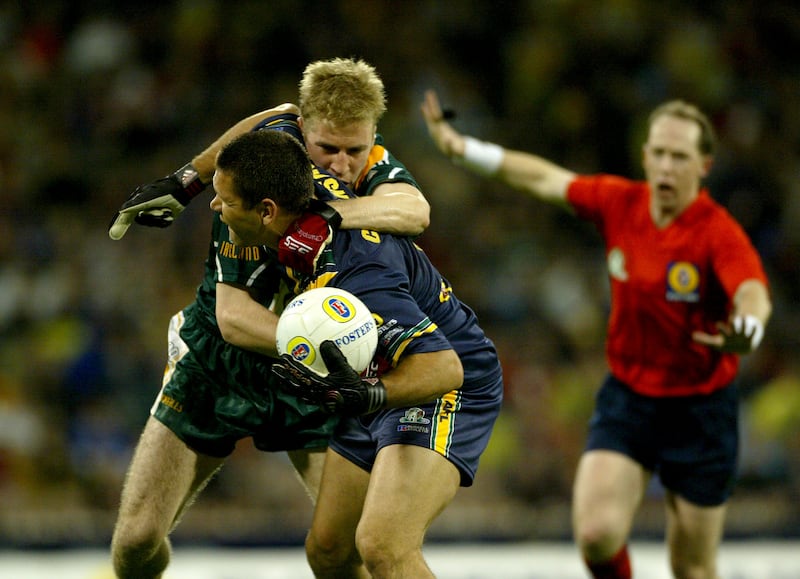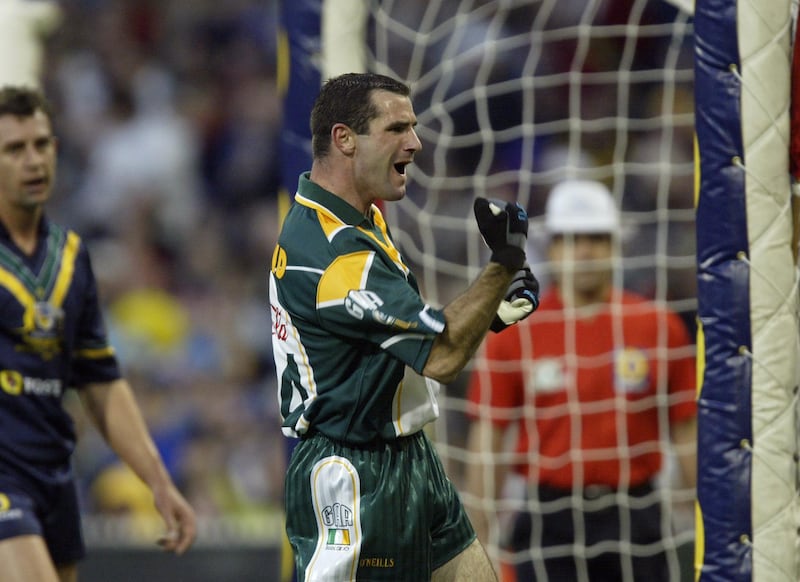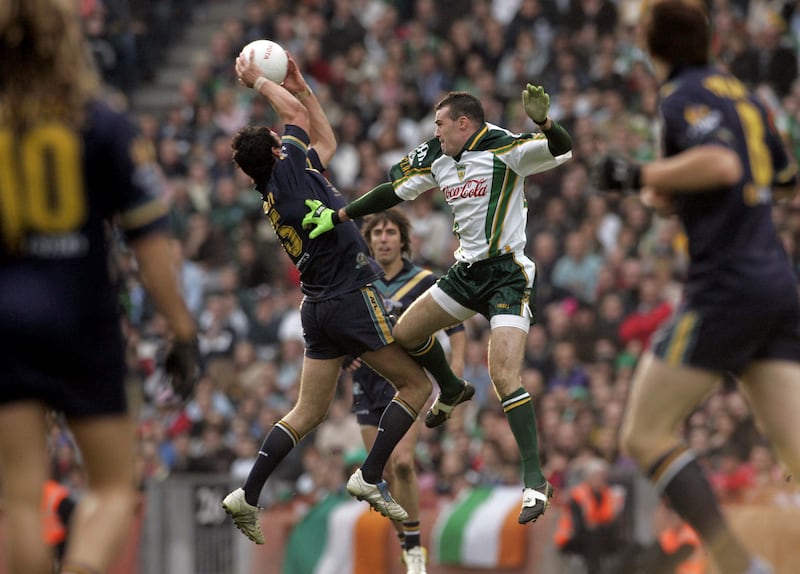It was former GAA president Peter Quinn who cautioned the association about complacency. As chair of both the Amateur Status and Strategic Review Committees, in 1997 and 2002, he was in the business of long-term strategies and anticipating problems.
“Every organisation is at its most vulnerable when most successful,” he said.
If not every tile with the potential to fall on the GAA’s head actually landed, the general reservation had merit in a precautionary sort of way.
If we go back exactly 20 years we can find the aphorism in action. It was Halloween in 2003 when the International Rules project peaked. No one knew this at the time but 12 months later the project faltered and, from then, never reclaimed the success of its initial years.
READ MORE
Melbourne at the end of that October was like Little Ireland. A vast number of people had arrived in the city for a loaded sporting schedule, running from Friday evening until Tuesday. They combined with the immigrants already there to give the city a feel of Temple Bar that weekend. You could bump into nearly anyone from home in the pubs.
The GAA team was there to play the second test of that year’s series on Friday. The first encounter in Perth hadn’t gone brilliantly and Ireland trailed by 10.
On Saturday Ireland played Australia in the last of their group matches in the Rugby World Cup. It was a fight for first place as both had qualified and three days later the Melbourne Cup, the “race that stops the nation” would be run at Flemington Park.

The crowds were out. Ireland’s test at the MCG attracted 60,235 – actually more than the rugby in Docklands Stadium, albeit which had a lower capacity – and a record 122,736 sweltered in their finery at the races, including enough county board officials to generate a Congress quorum.
The International Rules test more than held its own in this carnival of global sport. This was the sixth year of the revived series. By then, Ireland had won three times and Australia twice. Four of the five highest attendances the tests drew in its 19-year lifespan turned up in this initial phase.
In 2003, Ireland recovered from the Perth defeat to win by three. It was John O’Keeffe’s fourth and final year’s involvement with Ireland. His two series as manager represented a high point – both went all the way to the final whistle but, unfortunately for him, Australia won out narrowly on each occasion.
That night in the MCG, they lost on aggregate but shared the tests. It was an intense performance. Ireland captain Graham Canty’s battle with Barry Hall, who had disposed of a number of markers in the first test and scored 13 points as well as having about five inches on the Cork defender was fascinating.
Hall, whose talents at Aussie rules and boxing, topped off with anger management issues, made marking him a job not for the faint-hearted but Canty shadowed him relentlessly, getting in vital touches to prevent clean marks and never backing down.
Hall’s haul shrank to four and Canty was written up in local media as a potential AFL recruit and picked up the his team’s player of the series award for a second successive year.
Steven McDonnell’s goalscoring also attracted notice but it was a great team effort in keeping with the best hopes for the internationals even if the notion of established players making the transition in their mid-20s was purely speculative.

All along, the biggest danger to the internationals was the anarchy of indiscipline and either side being uncompetitive, which happened both when Australia failed to take it seriously and when they took it very seriously.
Decline came incrementally, the two core non-negotiables eroding in front of our eyes. In 2004 an unimpressive Australia got walloped by Ireland in the first test and in the following game a premeditated attack on the home team’s best performers from the previous week caused mayhem as Irish players reacted in kind.
The complacent decision not to pursue the miscreants and impose suspensions, even if futile given that they wouldn’t apply in the player’s domestic game, sent out the wrong signals.
Calamitously, in front of the best crowd to attend a test, 82,127 at Croke Park in 2006, an even worse all-in brawl took place. The series was already on a warning after some violent incidents the previous year.
At the end of the day, Pat Daly, the GAA’s lead on the internationals and who with the AFL’s Kevin Sheahan had patiently devised and evolved the rules, stood on the pitch in the aftermath and shook his head; “I think they’ve finished it,” he said disconsolately.

The Australians were completely unaware of the consequences. Both manager Kevin Sheedy and AFL CEO Andrew Demetriou were dazzled by the size of the crowd and almost shocked at the hostile questioning afterwards.
Behind the Gothic violence lay an equally pressing problem. At their best, Australia proved too much for Ireland once they decided to weaponise their legitimate advantages of physique and pace.
The series would eventually be suspended and then moved to a rotation of twice every three years before fizzling out as the organisations tried to find a level at which both sides could compete. Crowds lost interest in the intermittent efforts to relaunch.
John Tobin, one of the leading Irish figures in the international project, summarised why modern developments have now rendered the game obsolete.
“In the context of the current split season, I don’t see any chance of it coming back. The Australians have a longer league as well. In the modern calendar there’s just no room. It’s context and evolution. Everything has changed. It had its time and it was a great odyssey.”
The clock started ticking in Melbourne 20 years ago – even if none of us heard it.
















